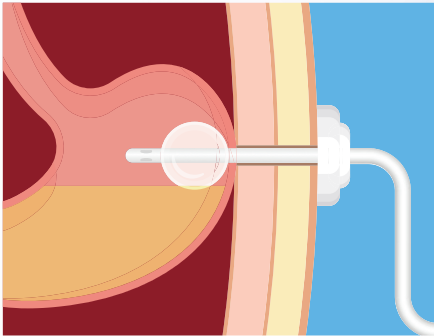PEG feeding tube resistant to removal – Case 302
A 49-year-old woman underwent a Roux-En-Y gastric bypass for obesity. This resulted in good weight loss, but unfortunately the patient later developed recurrent attacks of hyperinsulinaemic hypoglycaemia. Other methods to try to control the reactive hypoglycaemia were attempted without success and so bypass reversal was considered. The patient then had a 16Fr percutaneous endoscopic gastrostomy (PEG) feeding tube inserted laparoscopically. This helped to control the hypoglycaemia, enabling the surgeon to plan conversion to sleeve gastrectomy. However, in the interim, the patient was not able to tolerate the tube due to pain and asked for its removal after three months. The surgical registrar on call was tasked with removing the PEG tube, on a day-case list, under local anaesthesia. He attempted to do so, having checked that the tube rotated freely, but found the tube resistant to attempts to dislodge it. Rather than risk injuring the patient, he contacted the PEG team, who had not been involved with the placement of the tube. The PEG team explained that, with this particular device, it was necessary to deflate an internal balloon prior to device removal, a facet of the device that the registrar was unfamiliar with (Figure 1). The tube was subsequently removed with only minor discomfort to the patient. The case was discussed at a joint educational session between the PEG service and surgical team involved.


